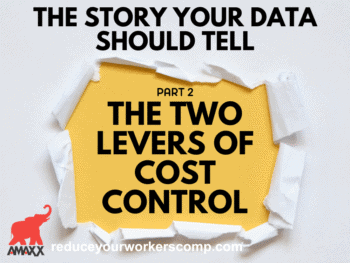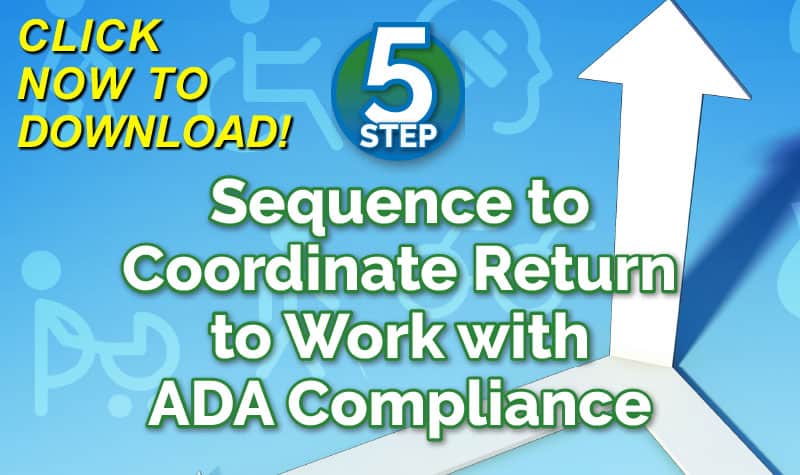Iconic Americana employers, like big box stores, supermarkets, wholesale clubs, home and garden warehouses, cannot ignore the “small stuff” in workers’ comp cost containment efforts. Failing in little ways can turn into very large work comp cost expenditures.
Risk Managers must be at the top of their game when an employer fits into the “mega-employment” category. We are talking about businesses with:
1. $10+ Billion in income.
2. Multiple store sites.
3. 45,000 to 50,000 plus employees, unionized or not.
4. Workplace injuries hovering around 4,000 a year.
5. Open Claims between 2,500 to 3,000+
For BIG Savings, Review These Eight Areas TODAY!
1. Handbooks and/or Brochures
It’s essential to keep the employee handbook and/or brochure updated. Outline in simple, easy to understand language exactly “what to do when you are hurt” — not only in English but also in other major languages the employees speak.
Make handbooks/brochures available to every new hire, on-line, and at the workers’ locations. Hold workshops periodically to review and update employees about the employer’s policies on injury management and return-to-work programs.
Train managers and/or supervisors in the use of safety packets, especially in workers’ compensation policies and procedures. Emphasize the employer’s firm policy of return-to-work, including modified duty positions.
2. Communicating with Injured Employees
Make employee communication a required top priority. Use personal involvement (go with the injured worker to the doctor; drive them home, etc.); telephone (follow-up on the worker’s progress; review the return-to-work policy); send get well cards; as soon as the worker is able, require on-site weekly check-in meetings at the workplace.
3. Overcoming Supervisor/Manager Resistance to Modified Duty Programs
The most effective post-accident workers’ compensation cost-control program an employer can directly influence is a well-managed return-to-work program. Encourage supervisory personnel to focus on what injured workers can do by using the work ability form and working closely with the treating physician to identify when the worker is medically able to return to modified duty.
4. Medical Care
Medical care of injured workers must be well managed. Work with the TPA to identify areas of concentration where better coverage may be provided and take steps to implement coverage. Medical triage of injured workers, often using nurse case managers, is an effective cost-cutting tool.
5. Report Injuries Immediately
Goal: 24 hour reporting. Studies show a marked increase in workers’ comp costs for claims reported up to 10 days after an injury occurs, compared to claims reported within 2 days of the accident.
When claims are reported within 24 hours employers see a decrease in lost workdays and wage replacement benefits; better management of medical treatment; modified duty (RTW) often occurs during the “waiting period” required by state laws.
6. Workers Likely to be Injured
Identify those workers most likely to be injured. Are they younger, older, less experienced, newly hired, untrained, long-time employees growing apathetic.* Once you know the who implement training in best safety practices. Actually, the worker’s compensation people and the safety folks need to be running on parallel tracks in the efforts to achieve cost containment.
* Keep clearly before your eyes all laws and regulations falling under EEOC, ADA, OSHA, union contracts, et al, both state and federal, applying to your industry, work environment and employees.
7. Performance Metrics
If you don’t employ, on a regular basis, at set intervals, an assessment of your overall workers’ comp program, then you will not know what you don’t know. Not knowing is a sure way to drive costs UP rather than down. (workersxzcompxzkit)
8. Implement a Fraud Program
Fraud is like the poor – it’s always with us. The first rule of fraud prevention is to send the message “ fraud will not be tolerated” to every employee. If an employer is “just a little guy” maybe fraud is not an issue or is easily noticed and prevented. However, when dealing with multi-thousands of employees, uncontrolled fraud is going to take a big bite out of the bottom line, i.e., profit.
Let’s Wrap It Up
Keep in mind, these ideas, suggestions, and outcomes are not made up. In fact, real employers actually implemented some or all of these work comp tools and achieved significant cost containment, better medical claims management; returned employees to work sooner, reduced workplace injuries and lowered their insurance premiums.
Author Robert Elliott, executive vice president, Amaxx Risks Solutions, Inc. has worked successfully for 20 years with many industries to reduce Workers’ Compensation costs, including airlines, healthcare, manufacturing, printing/publishing, pharmaceuticals, retail, hospitality and manufacturing. Contact: Robert_Elliott@ReduceYourWorkersComp.com or 860-553-6604.
FREE WC IQ Test: http://www.workerscompkit.com/intro/
WC Books: http://www.reduceyourworkerscomp.com/workers-comp-books-manuals.php
WC Calculator: http://www.reduceyourworkerscomp.com/calculator.php
TD Calculator: http://www.reduceyourworkerscomp.com/transitional-duty-cost-calculator.php
Do not use this information without independent verification. All state laws vary. You should consult with your insurance broker or agent about workers' comp issues.
FREE WC IQ Test: http://www.workerscompkit.com/intro/
WC Books: http://www.reduceyourworkerscomp.com/workers-comp-books-manuals.php
WC Calculator: http://www.reduceyourworkerscomp.com/calculator.php
TD Calculator: http://www.reduceyourworkerscomp.com/transitional-duty-cost-calculator.php
Do not use this information without independent verification. All state laws vary. You should consult with your insurance broker or agent about workers' comp issues.
©2010 Amaxx Risk Solutions, Inc. All rights reserved under International Copyright Law. If you would like permission to reprint this material, contact Info@WorkersCompKit.com




















